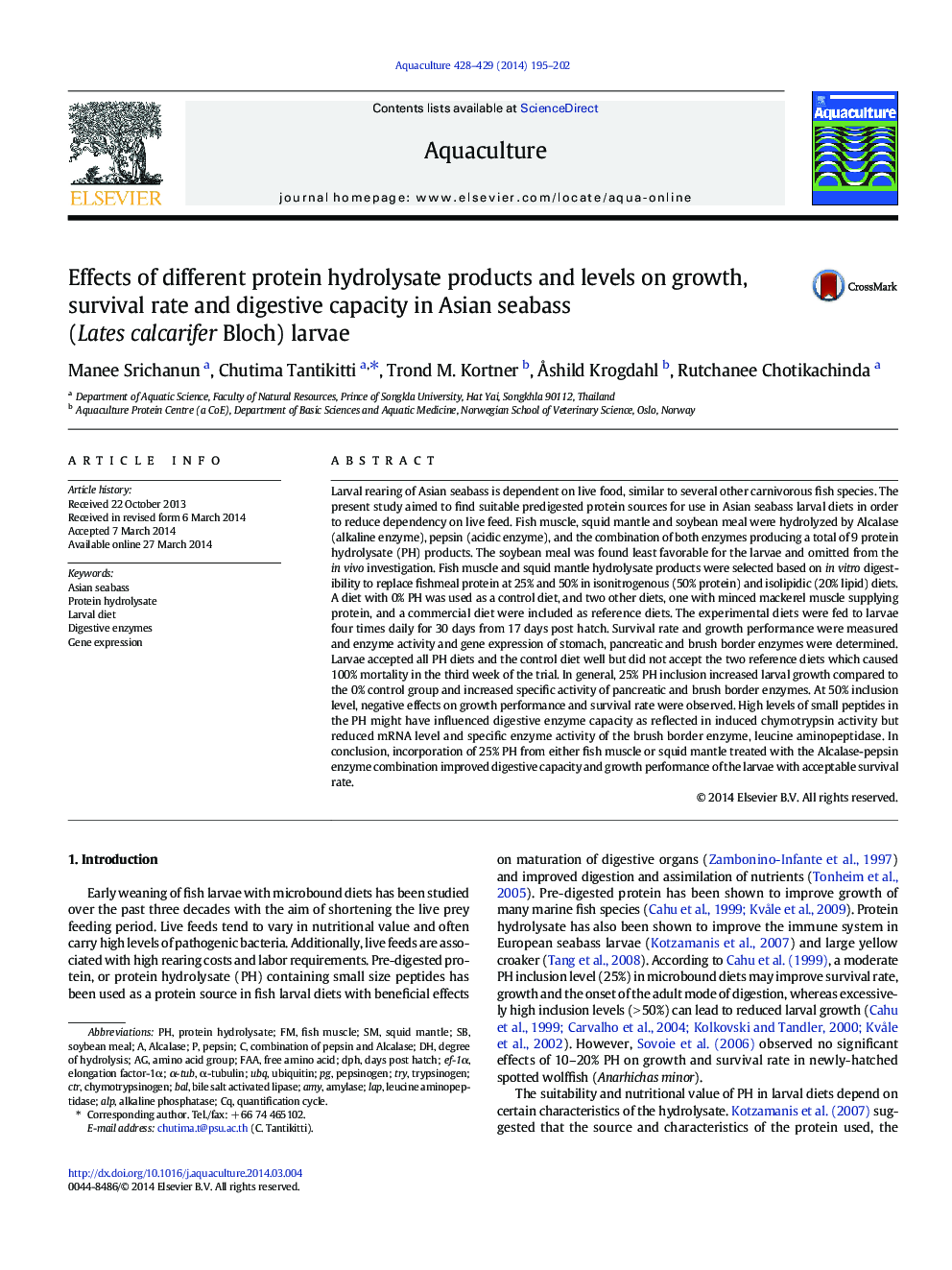| Article ID | Journal | Published Year | Pages | File Type |
|---|---|---|---|---|
| 8495072 | Aquaculture | 2014 | 8 Pages |
Abstract
Larval rearing of Asian seabass is dependent on live food, similar to several other carnivorous fish species. The present study aimed to find suitable predigested protein sources for use in Asian seabass larval diets in order to reduce dependency on live feed. Fish muscle, squid mantle and soybean meal were hydrolyzed by Alcalase (alkaline enzyme), pepsin (acidic enzyme), and the combination of both enzymes producing a total of 9 protein hydrolysate (PH) products. The soybean meal was found least favorable for the larvae and omitted from the in vivo investigation. Fish muscle and squid mantle hydrolysate products were selected based on in vitro digestibility to replace fishmeal protein at 25% and 50% in isonitrogenous (50% protein) and isolipidic (20% lipid) diets. A diet with 0% PH was used as a control diet, and two other diets, one with minced mackerel muscle supplying protein, and a commercial diet were included as reference diets. The experimental diets were fed to larvae four times daily for 30Â days from 17Â days post hatch. Survival rate and growth performance were measured and enzyme activity and gene expression of stomach, pancreatic and brush border enzymes were determined. Larvae accepted all PH diets and the control diet well but did not accept the two reference diets which caused 100% mortality in the third week of the trial. In general, 25% PH inclusion increased larval growth compared to the 0% control group and increased specific activity of pancreatic and brush border enzymes. At 50% inclusion level, negative effects on growth performance and survival rate were observed. High levels of small peptides in the PH might have influenced digestive enzyme capacity as reflected in induced chymotrypsin activity but reduced mRNA level and specific enzyme activity of the brush border enzyme, leucine aminopeptidase. In conclusion, incorporation of 25% PH from either fish muscle or squid mantle treated with the Alcalase-pepsin enzyme combination improved digestive capacity and growth performance of the larvae with acceptable survival rate.
Keywords
α-tubFAAEF-1αBile salt activated lipaseUBQLAPCTRDPHBALAsian seabassα-TubulinAlcalaseALPAlkaline phosphataseamylaseFree amino acidLeucine aminopeptidaseDigestive enzymesAMYGene expressiontrypsinogenTRYdegree of hydrolysisdays post hatchLarval dietelongation factor-1αFish muscleProtein hydrolysatePepsinpepsinogenquantification cycleChymotrypsinogenSoybean mealUbiquitin
Related Topics
Life Sciences
Agricultural and Biological Sciences
Aquatic Science
Authors
Manee Srichanun, Chutima Tantikitti, Trond M. Kortner, Ã
shild Krogdahl, Rutchanee Chotikachinda,
